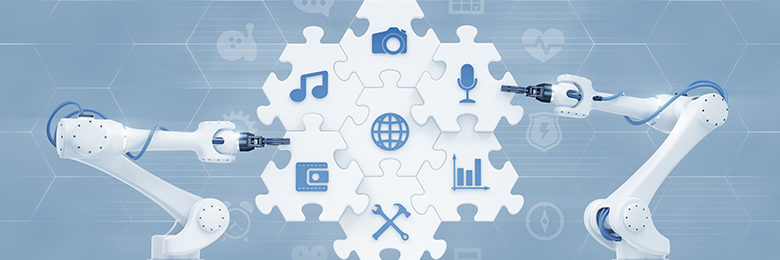The Coming Great Transformation in the Global Macro Environment

Demographics, automation, and inequality have the potential to dramatically reshape our world in the 2020s and beyond. Our analysis shows that the collision of these forces could trigger economic disruption far greater than we have experienced over the past 60 years. The aim of this analysis by Bain’s Macro Trends Group is to detail how the impact of aging populations, the adoption of new automation technologies, and rising economic inequality will likely combine to give rise to new business risks and opportunities. These gathering forces already pose challenges for businesses and investors. In the next decade, they will combine to create an economic climate of increasing extremes but may also trigger a decade-plus investment boom.
In the US, a new wave of investment in automation could stimulate as much as $8 trillion in incremental investments and abruptly lift interest rates. By the end of the 2020s, automation may eliminate 20% to 25% of current jobs, hitting middle- to low-income workers the hardest. As investments peak and then decline—probably around the end of the 2020s to the start of the 2030s—anemic demand growth is likely to constrain economic expansion, and global interest rates may again test zero percent. Faced with market imbalances and growth-stifling levels of inequality, many societies may reset the government’s role in the marketplace.
The early 2020s are likely to be a time of economic upheaval and the beginning of a major transformation that will play out over several decades. As detailed in our full Bain Brief, the key forces at work are demographic change, the rapid spread of automation technologies and rising economic inequality. Because these forces are likely to combine in different ways—sometimes reinforcing each other, sometimes offsetting each other—our effort to trace the economic developments throughout the 2020s is a rough sketch. That said, businesses and investors who understand the broad forces at work will be in a better position to adjust to the changes ahead.
We expect the 2020s to be a period of greater macroturbulence and volatility than seen in decades. It is also likely to be a period in which extremes become more extreme. Technological innovations will give rise to new corporate powerhouses, but at the same time, pervasive insecurity may haunt ordinary families and global enterprises alike. In our base-case scenario, paradoxes abound: High unemployment coexists with labor shortages; rapid inflation affects some sectors, and rapid deflation hits others.
To some, this may seem a continuation of the current decade. But the speed and magnitude of changes, spurred by the maturation of a broad set of automation technologies poised to transform the service sector, are likely to be qualitatively different.
Over the past four decades, economies around the world have increasingly struggled with weak demand growth. An economy firing on all cylinders should grow faster, but a persistent lack of demand growth has restrained overall growth. Intermittent bouts of debt-fueled investment and consumption have temporarily boosted demand only to be followed by a crash and a time of readjustment. The best example of this was the global financial crisis and the Great Recession, the impacts of which are only now subsiding in many countries.
Societal aging is bringing an end to plentiful labor growth, but older populations will continue to fuel steady demand. In isolation, this trend should create the potential for relatively balanced demand growth vs. supply growth and a generally more sustainable, if lackluster, economy.
However, the rapid spread of automation and worsening income inequality push in the opposite direction. Automation, in particular, has the potential to significantly increase supply growth, but the job losses and wage pressures it triggers should act to restrain demand growth likely from the middle of the 2020s on.
The magnitude of automation we anticipate would require a significant surge of capital investment, similar to the earlier waves of investment required to build information and communications technology in the mid- to late 1990s and the real estate investment surge seen more recently in the US, Ireland, Spain, and China. An even better comparison might be to the period 100 years earlier—the Roaring Twenties—when robust investment in the automotive, radio and petrochemicals industries, along with associated infrastructure spending on roads, electrical grids, telephone lines, and the consequent urbanization, created a period of increased labor productivity and increased economic growth.
The coming transformation will test leadership teams profoundly. Automation will reshape national economies, throw labor markets into turmoil and change the rules of the game in many industries. Aging populations will strain social systems as never before. But the 2020s will be a period of growth and innovation, too. Eventually, beyond the time horizon of our report, the global economy will recover from the temporary imbalances created by demographics, automation, and inequality. As the labor force develops new skills, productivity gains will benefit a broader segment of the population, and new industries will flourish.
Getting there is the challenge. How should leadership teams set targets or goals if longtime assumptions are no longer valid? Clearly, there is no set formula for managing through significant macroeconomic upheaval. But there are many practical steps companies and investors can take to assess how a vastly changed macroeconomic landscape might affect their business and how to position themselves for change. In our view, the most important one is building resilience.
Though not for everyone, some leadership teams may gain a strategic advantage by doubling down early on an upcoming macro tailwind before others spot the trend. Institutional investors and large asset managers have increasingly turned to macro thematic investing as sources of differentiation. Some large, diversified companies also focus their growth strategies using a macro thematic lens. A high-conviction macro thesis can create an opportunity to pull ahead of competitors when it is done well—aligned with overall business strategy, tailored to strengths, directed away from overcrowded first-order implications, and pushed to the second- and third-order implications where untapped value exists.
Organizations that can absorb shocks and change course quickly will have the best chance of thriving in the turbulent 2020s and beyond.
~~~
